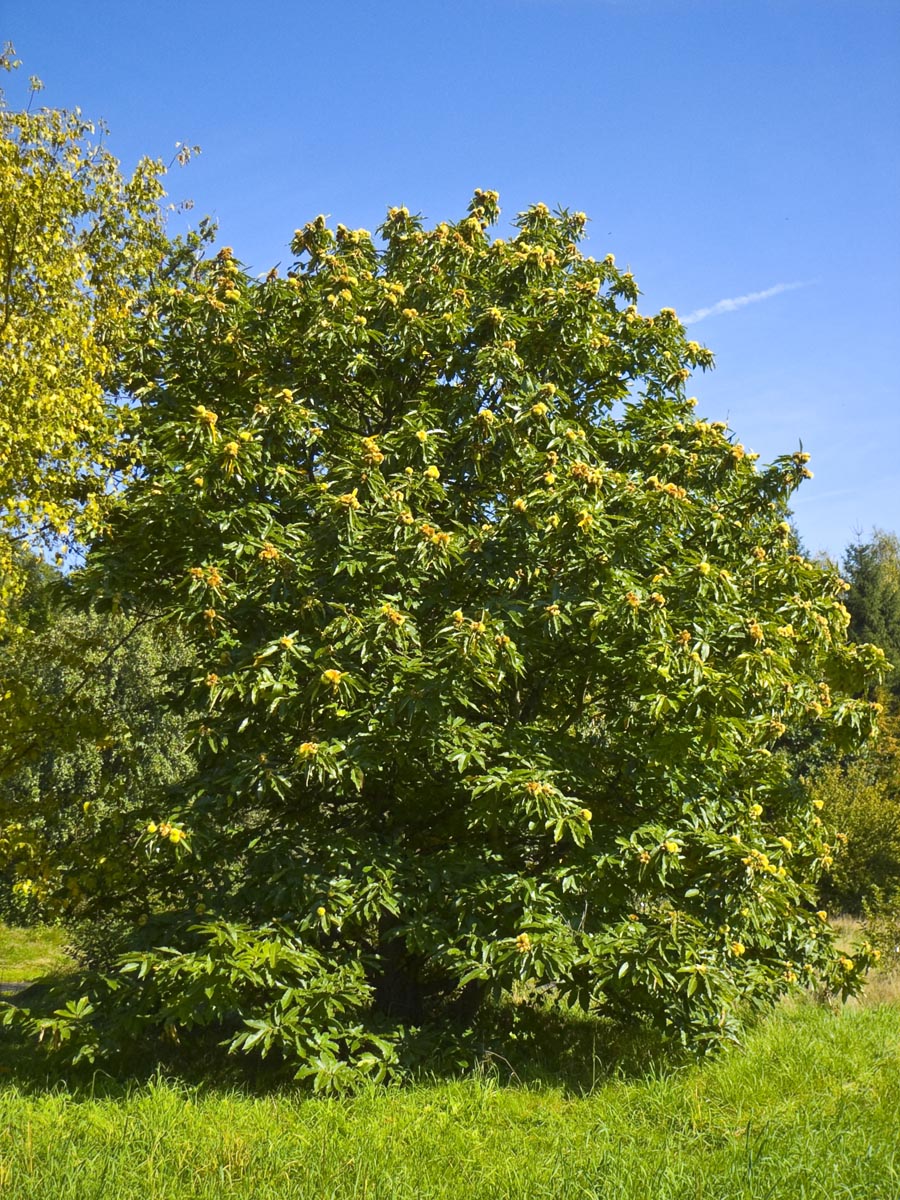Castanea sativa
Sweet Chestnut
Castanea sativa forms a tall and stately tree with wide-spreading branches, making it an excellent choice for providing shade in wide, open spaces. Castanea sativa has glossy, deep-green leaves with sharply-toothed margins. In autumn, Castanea sativa produces red-brown fruits wrapped in a green, spiky case that add to its visual appeal. Castanea sativa also produces yellow autumn leaves, providing additional seasonal interest. While Castanea sativa has both male and female flowers on the same tree, it is mostly self-incompatible, so more than one tree is required for pollination and nut production. Castanea sativa is deciduous and native to Southern Europe and Asia Minor and is found across the Mediterranean region, from the Caspian Sea to the Atlantic Ocean. Learn more about Castanea sativa.
Other common name(s): European Chestnut, Spanish Chestnut
Synonyms:
$208.00
Deciduous
Height: 8.0m
Width:
6.0m
Estimated 10 year height and width
Castanea sativa stock information
Full Stocklist| Grade | Height | Standard | Available | I/P | Qty / Price |
|---|







